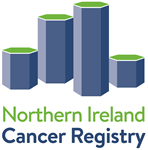Investigated Alleged Cancer Clusters
Vigilant individuals will often be concerned that a population has a higher rate of disease than they would expect. Part of this suspicion may reflect the increasing frequency with which cancer is diagnosed in our population. This increase has several causes:
- Firstly, an ageing population, as we live longer we are more likely to develop diseases of old age, including cancer.
- Secondly, competing causes of deaths such as infection has largely been controlled.
- Thirdly, technological advances have improved the accuracy of diagnosis and so we are better at diagnosing cancer when it occurs.
- Finally, lifestyle changes including the use of tobacco, a high fat/low fibre diet combined with increased alcohol consumption, obesity, sun & sunbed exposure and reduced levels of exercise have increased our risk of developing cancer.
The Cancer Registry will follow procedures for cluster investigation as outlined by the Ontario Cancer Treatment and Research Foundation. (Ref: King WD, Darlington G A, Kreiger N. Response of a Cancer Registry to Reports of Disease Clusters, Br J Cancer 1993; Vol. 29: No. 10, 1418 - 25). Such analyses are likely to incur a cost.
The steps are as follows:
1. Assessing the Inquiry
- There must be sufficient numbers of cases, (minimum of 5 per unit of analysis and of the same type or body system, or a smaller number of a very rare cancer).
- A plausible biological association must exist with a suspected exposure.
In many reported clusters it will be impossible to proceed past this stage due to low numbers etc.
2. Verification of Cases
If it is possible to proceed, the Registry will verify the quality of data, prior to analysis. This reduces reporting bias.
3. Analysis
Analysis using special statistical methods designed for the study of spatial, temporal and/or space-time disease clustering will be undertaken.
Recommendations based on the steps above may be:
i) no further action
ii) future surveillance or
iii) a detailed study, depending on the satisfaction of criteria on statistical significance, biological plausibility and documentation of exposure.
Cluster Investigation of Cranlome Telecommunications Mast - May 2004
In May 2004 Registry staff carried out an investigation of cancer incidence in the vicinity of a telecommunications mast in Cranlome. The Reports, appendices and powerpoint presentation are available for download below in PDF format.

